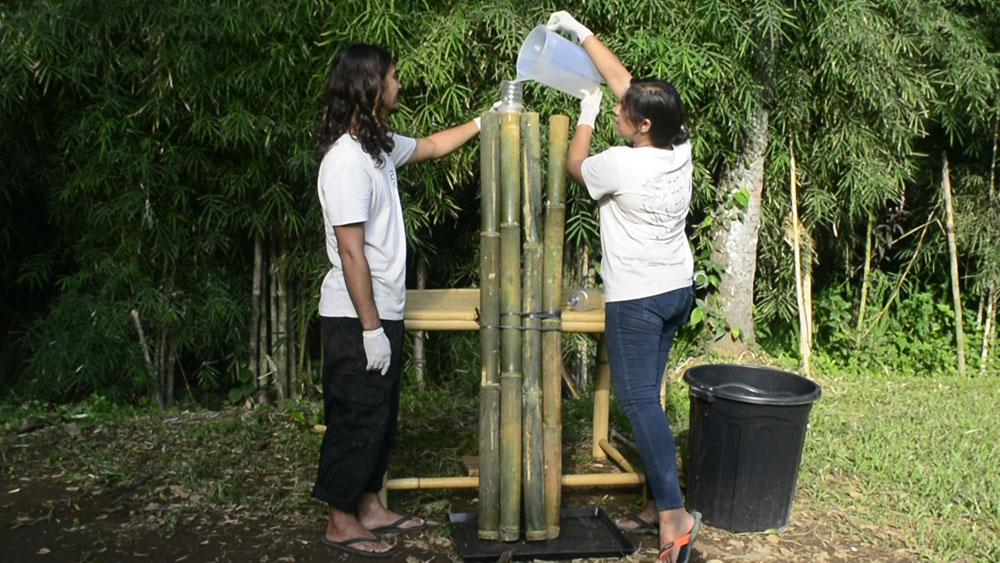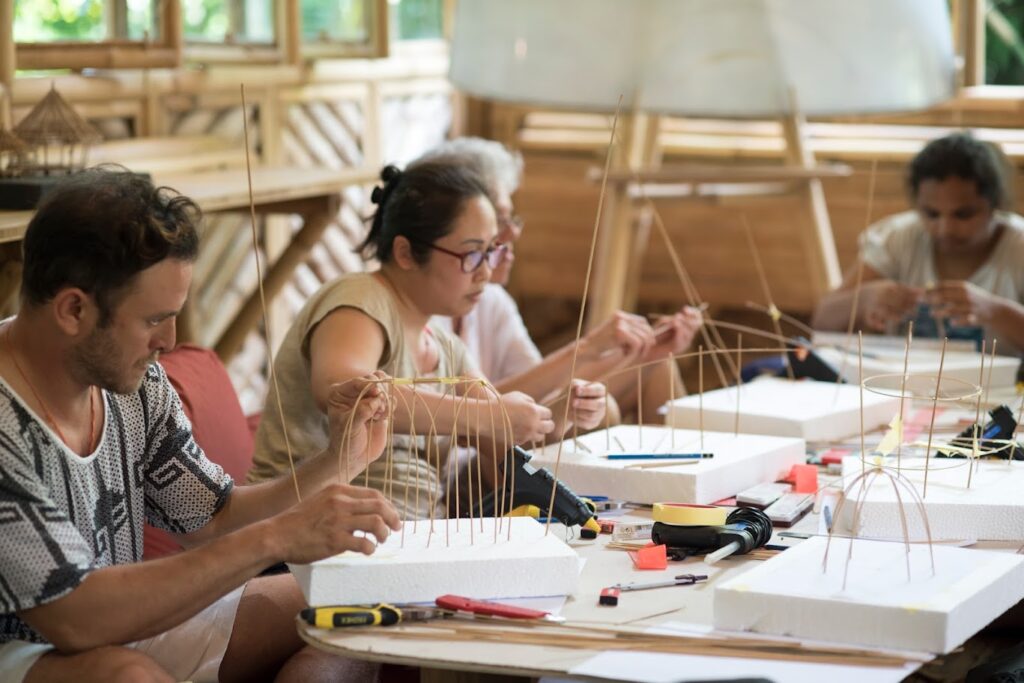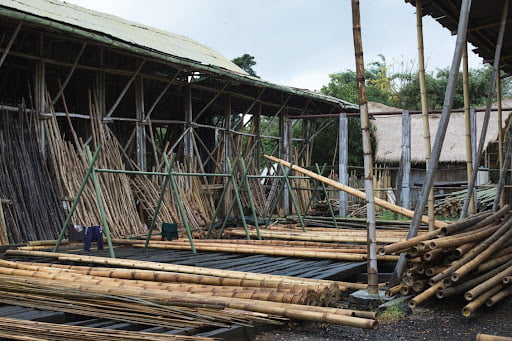Vernacular Methods Of Treating Bamboo You Should Know
By Maria Farrugia & Sai Goutham | June 27, 2022 | Treatment -

The 4 methods used traditionally to treat bamboo including, harvesting, leaching, fermentation, smoking, and salt-water immersion.
Bamboo is a strong renewable resource but it is natural, making it liable to have a few natural predators. If bamboo is not preserved, insects, especially the powder-post beetle (Dinoderus spp), would eat the bamboo from the inside out. Consequently, the integrity of the bamboo culm’s structure would be compromised and eventually fail. Making sure that the bamboo you use in construction, or any other project, becomes repulsive to these predators is the first step to keeping your bamboo structure standing for a lifetime.
Bamboo has been used for construction for 1000s of years, and traditionally people, mainly from South East Asia and South America have found very simple and natural practices to increase bamboo’s durability.
It is important to note, that we do not recommend that these methods are used for building permanent bamboo structures. Nevertheless, they may be useful in building low-cost, semi-permanent, small structures out of bamboo.
In this article, we share the 4 methods used traditionally to treat bamboo, including:
- Water-Leaching
- Fermentation
- Smoking And Heating
- Salt Water / Sea Water Immersion
Time Of Harvest
The traditional wisdom around the topic of harvesting bamboo was born out of the desire to harvest bamboo poles when the starch content present within the bamboo culm was at its lowest.
When considering photosynthesis, bamboo starts transporting starch from the roots into the leaves of a plant in the morning. At the height of the day, this process is at its peak, where the plant is full of starch, making this the least ideal time of day to harvest bamboo. The best time to harvest bamboo, therefore, is before sunrise, between 10:00 pm and 6 am when most of the starch is present only within the root system.
The moon phase tradition was also considered when harvesting the bamboo. The starch content within the bamboo is at its lowest between waning gibbous and the third-quarter moon, between the 6th and 8th day after the full moon because of the stronger gravitational pull of the moon. Making this time of year the best time to harvest bamboo to use for construction.

Water-Leaching
This is one of the simplest ancestral techniques for preserving bamboo. The concept relies on submerging the bamboo in flowing, clean water for a certain period (4-8 months). The water-soluble substances present in the bamboo, such as starch and sugars, will be washed away slowly. This makes the pole less attractive to insects as food. It is important to note, however, that the bamboo is still not completely resistant to insect attacks and molds following this process.
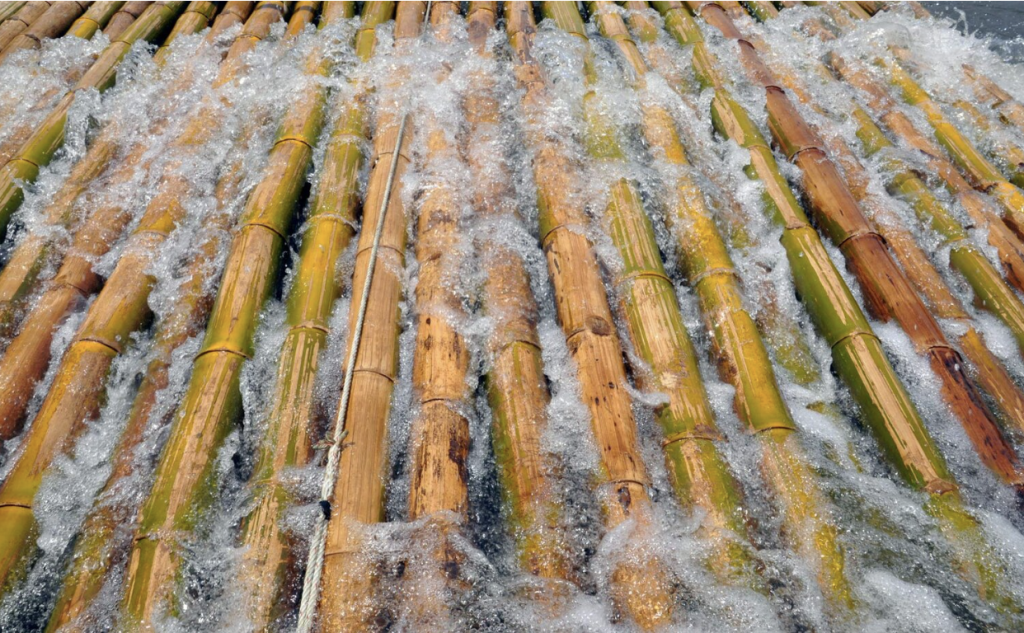
Fermentation
In this technique, the idea is to compost the bamboo within mud and tree leaves for a few months (3-4 months). The microorganisms and bacteria in the compost converts the starches and sugars into acid thus lowering the likelihood of insect predation. This method, although ingenious, is very inconsistent and lacks assurance that will protect the bamboo from further insect infestation further down the line.

Smoking and Heating
Smoking bamboo poles reduces the moisture content in freshly harvested bamboo and extrudes out the sugars that are in the pole. Furthermore, the chemical compounds found in smoke are absorbed by the bamboo tissues and help to protect them from insects. The main challenge with this method is to maintain consistency of heat and smoke quality throughout the bamboo preservation process, so that each pole is treated uniformly. Burning large amounts of material to create smoke also has its own environmental challenges.

Saltwater and Seawater
Sumberging bamboo into salt water is an effective treatment solution. The bamboo is submerged in the ocean for 30 days - 3 months to allow the fibers to absorb the salt solution and release the sugary sap from the parenchyma within the bamboo. Holes are punched through the core of the pole, to break free the internodes of the bamboo to allow for maximum penetration of salts into the bamboo. On some occasions, minuscule holes are also drilled from the outside skin at each internode for very thick-walled bamboo.
The only challenge with this method is that seawater is composed of sodium and chlorine (NaCl) and the chlorine is highly corrosive. This presents issues during construction as it rusts steel bolts used for joinery connections and collects humidity out of the air which can lead to issues in the long term.
There is the logic behind all the traditional practices to treat bamboo and these practices are usually not environmentally harmful, but they are often impractical or unreliable in the modern context of the construction industry.
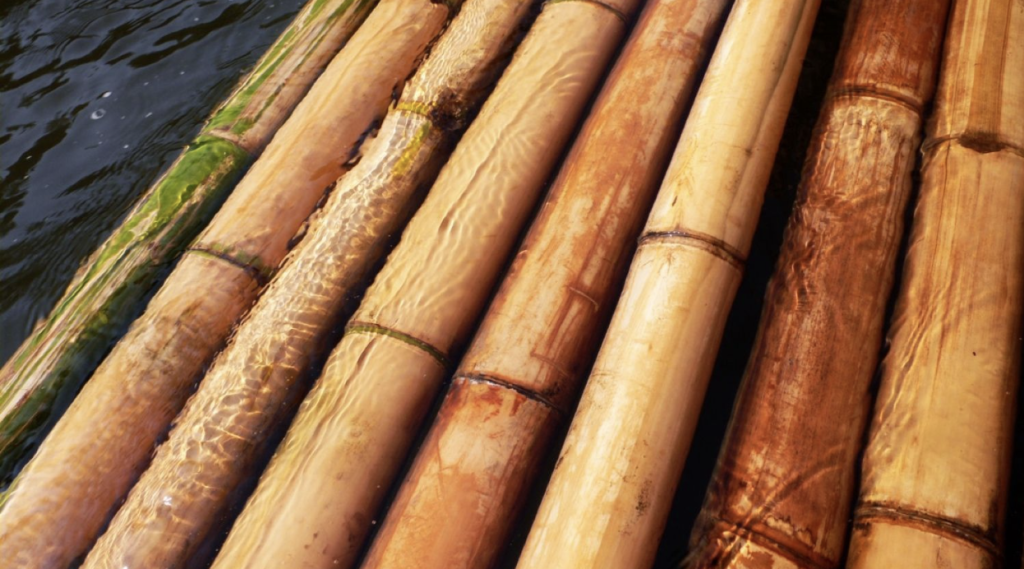
Although these traditional methods have been used for 1000s of years by our ancestors, we still have found that borax and boric acid treatments are the most reliable treatment methods to treat bamboo for permanent structures. Borax and boric acid-based treatments are not harmful to the environment and they are relatively accessible and affordable. With some basic training, anyone can begin to treat bamboo poles to create a durable building material.
In conclusion, if you have some poles in your backyard that you would like to harvest and experiment with building small-scale, semi-permanent structures we recommend giving the traditional methods a go, however, if you plan to build larger and more permanent structures then we highly recommend learning about borax and boric acid treatments. We’ve got a free e-book about all you need to know about bamboo treatment with borates available, and a how-to-guide for treating bamboo with borax in your backyard.
Finally, this topic is something we discuss in great depth during Module 4 of The Bamboo U Online Course. This module includes instructional videos and downloadable guides on how to treat bamboo to create long-lasting bamboo buildings. Learn more about the course here.

Maria is the Bamboo U Director and Sai Goutham was the Research & Development Manager. Together they formulate ideas, write content and create illustrations to share knowledge of bamboo architecture and design.
OCTOBER 10-21, 2025
The 11 Day Bamboo Build & Design Course in Bali
In 11 days, we'll show you how to build bamboo structures we’ll share all that it takes to build with nature.
Start Anytime
The Bamboo Harvesting Course
The Bamboo Harvesting Course is an online step-by-step training to harvest and care for your bamboo clumps to ensure their longevity and productivity. This maximizes the potential of this beautiful grass as a rapidly renewable resource.Whether you are an architect, builder, or sustainability enthusiast, this mini course will enable you to utilize this rapidly regenerative resource as a durable construction material.It will help remove any fear or doubt about the durability of bamboo and help you build reputable bamboo structures that stand the test of time!


